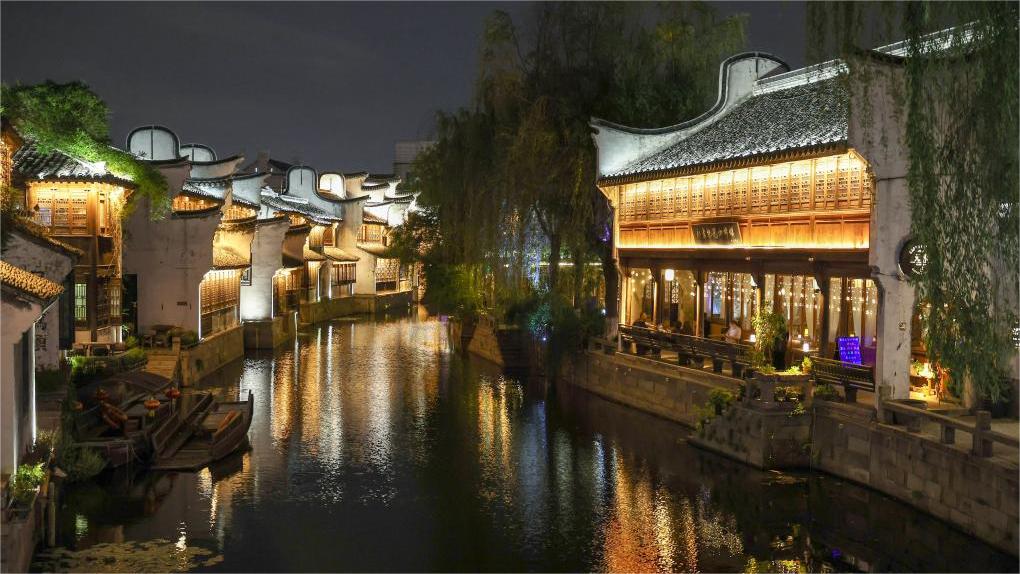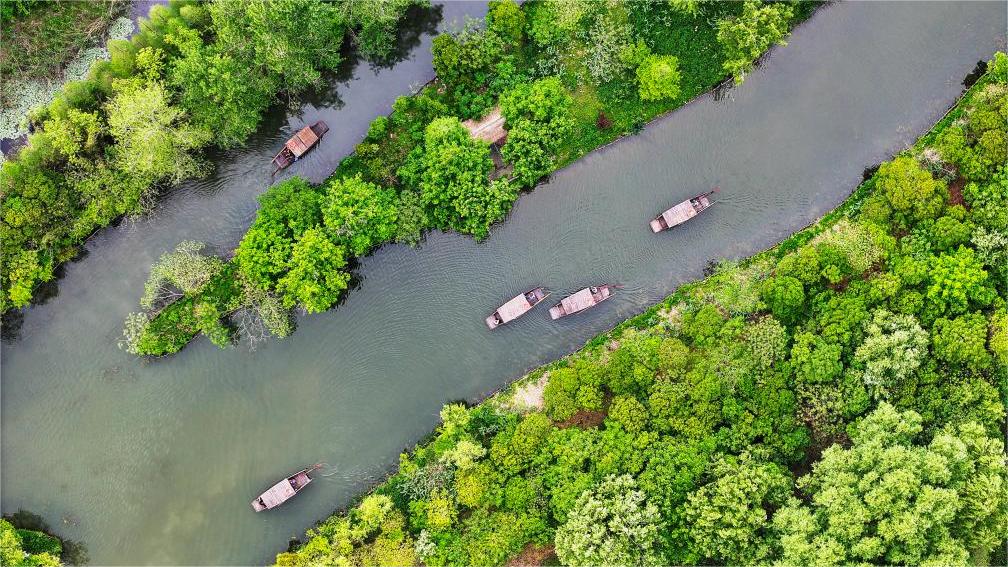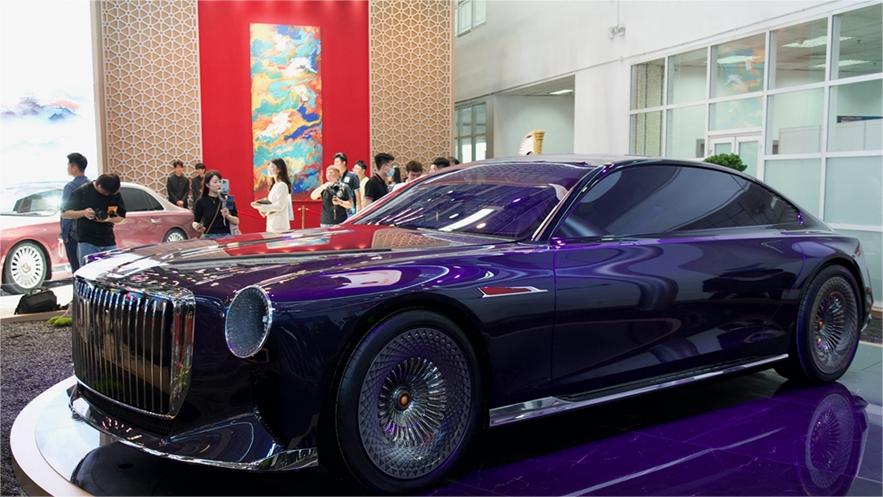Bronzes from central China illuminate Hong Kong with ancient civilization
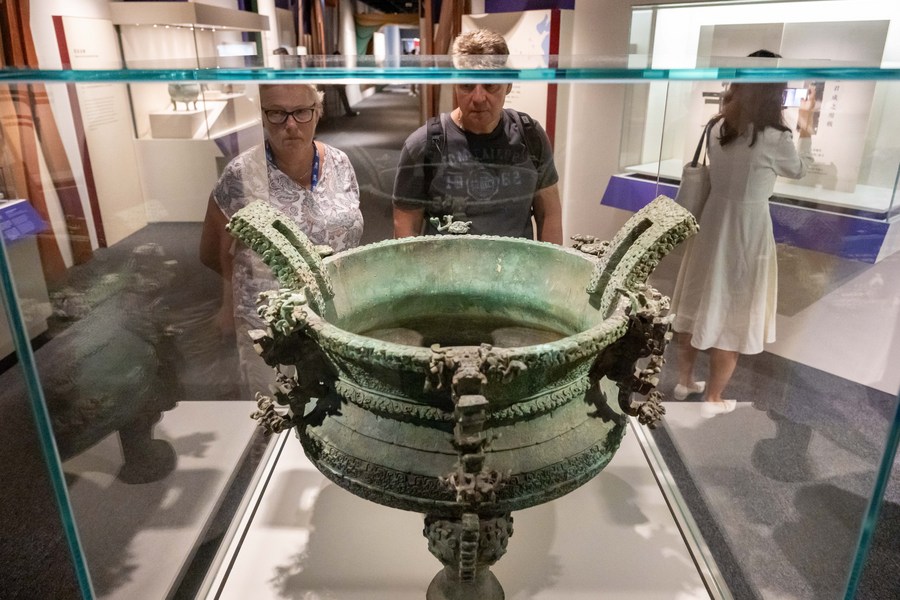
Audiences visit the "Center of the World" exhibition, which aims to trace back to the origin of Chinese civilization, focusing on Xia, Shang and Zhou, the three earliest dynasties in Chinese history and collectively referred to as the Bronze Age, held in the Hong Kong Museum of History in south China's Hong Kong, April 24, 2024. (Xinhua/Zhu Wei)
More than 150 sets of cultural relics from 15 institutions in eight cities in central China's Henan province have been transported southward to Hong Kong and are now on display in the Hong Kong Museum of History, telling the story of Chinese civilization in this international metropolitan.
HONG KONG, April 29 (Xinhua) -- During her five-day study trip to central China's Henan Province last April, Chun Wai-wa marveled at the high degree of development of ancient Chinese civilization while exploring the ruins of cities dated from around 2000 years to 4000 years ago.
"How can I pass on my deep feeling to the audience in Hong Kong?" pondered Chun, assistant curator of the Hong Kong Museum of History (HKMH), as she and her colleagues crafted plans for the first exhibition of the General History of China Series.
One year later, more than 150 sets of cultural relics from 15 institutions in eight cities in Henan have been transported southward to Hong Kong and are now on display in the HKMH from April 3 to July 8, telling the story of Chinese civilization in this international metropolitan.

Audiences visit the "Center of the World" exhibition, which aims to trace back to the origin of Chinese civilization, focusing on Xia, Shang and Zhou, the three earliest dynasties in Chinese history and collectively referred to as the Bronze Age, held in the Hong Kong Museum of History in south China's Hong Kong, April 24, 2024. (Xinhua/Zhu Wei)
ORIGIN IN CENTRAL PLAINS
Titled "Center of the World," the exhibition aims to trace back to the origin of Chinese civilization, focusing on Xia, Shang and Zhou, the three earliest dynasties in Chinese history and collectively referred to as the Bronze Age.
But why Henan? According to Hui Siu-mui, curator of HKMH, Henan houses the ruins of the capitals of all three dynasties, and numerous cultural relics were unearthed in the region.
The idea from those Hong Kong curators was echoed by their Henan counterparts as soon as the latter had been contacted.
"We have always paid great attention to cultural exchanges via relics, as it is a good way to vividly tell the story of Chinese civilization," said Ren Wei, director of the Henan Provincial Administration of Cultural Heritage, adding that cultural relics from Henan embodied the essence of Chinese civilization and could definitely unleash unique charm in Hong Kong, where diversified cultures exchange and blend among one another.
Upon returning to Hong Kong, Chun and others started to go through a large amount of photos, videos and other documents collected during their trip to Henan and pick out the most representative relics that can piece together a holistic picture of China's Bronze Age.
Under coordination, 15 institutions finally agreed to offer collections, including large and complete sets of bronze wares, jade wares, potteries, bone wares and oracle bones. Noteworthy, 33 items are grade-one national treasures and about 40 items are on display outside Henan for the first time.
As both the Hong Kong and Henan teams hope to display more of the latest achievements in Chinese archaeology, there are 44 items unearthed after the year 2000.
A lot of details of the exhibition also demonstrate the joint efforts made by the two sides during a year of intensive cooperation. For instance, to provide high-definition pictures for the catalog, the Henan team made efforts to find a venue suitable to take a group photo for a huge set of bronze ritual objects.
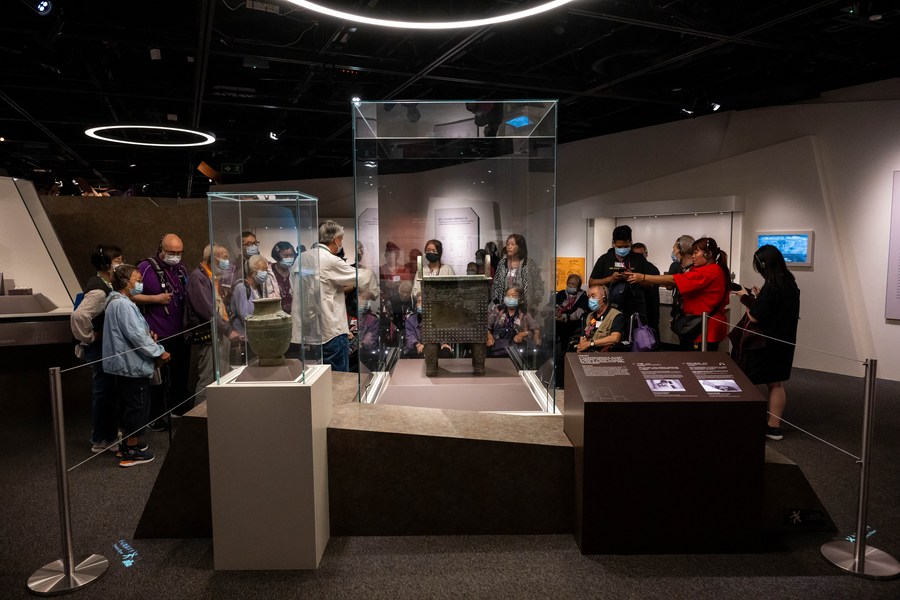
Audiences visit the "Center of the World" exhibition, which aims to trace back to the origin of Chinese civilization, focusing on Xia, Shang and Zhou, the three earliest dynasties in Chinese history and collectively referred to as the Bronze Age, held in the Hong Kong Museum of History in south China's Hong Kong, April 24, 2024. (Xinhua/Zhu Wei)
CULTURAL RELICS COMING SOUTH
After nearly one year's preparation, relics from all over Henan successively arrived at Henan Museum this March, waiting to be transported southward collectively.
Many of the exhibits are "popular stars" with a tight exhibition schedule. As a result, the handover was limited to only three and a half days. Experts from both sides checked and recorded every detailed feature of each item in an intense and orderly manner.
It was the first time for Wong Yun-Chiu, assistant curator from the Conservation Office of the Hong Kong Special Administrative Region (HKSAR) government, to deal with so many ancient bronzes with his own hands.
"I learned some traditional as well as innovative restoration methods from my Henan peers," Wong recalled, adding that chemical analysis was adopted at Henan Museum to reinterpret the bronze-casting techniques of ancient times.
To safely ship those precious items, a number of packaging boxes were customized in special sizes and shapes. Every step of the transportation scheme was examined again and again.
The lid of the Wangziwu Ding of the Spring and Autumn period, having been evaluated by experts to be in a rather fragile state, was left behind in Henan. "It pained us to make the decision," Chun said, "but the 'blessing in disguise' may be that the audience can view the inscriptions inside the Ding without its lid."
The display arrangement also highlights the security of the relics. "Based upon that consideration, we then figured out the best ways that allow the audience to appreciate the time-honored craftsmanship," Wong said.
During the exhibition, the condition of the cultural relics is monitored by Wong and his colleagues around the clock, with key indicators including temperature, humidity, the intensity of illuminance and the impurity level of the environment.
"The suitable humidity of bronze wares is under 40 percent. As to oracle bones, it should be a little higher than 50 percent," Wong explained, a close attention was paid to this regard as Hong Kong is much wetter than Henan.
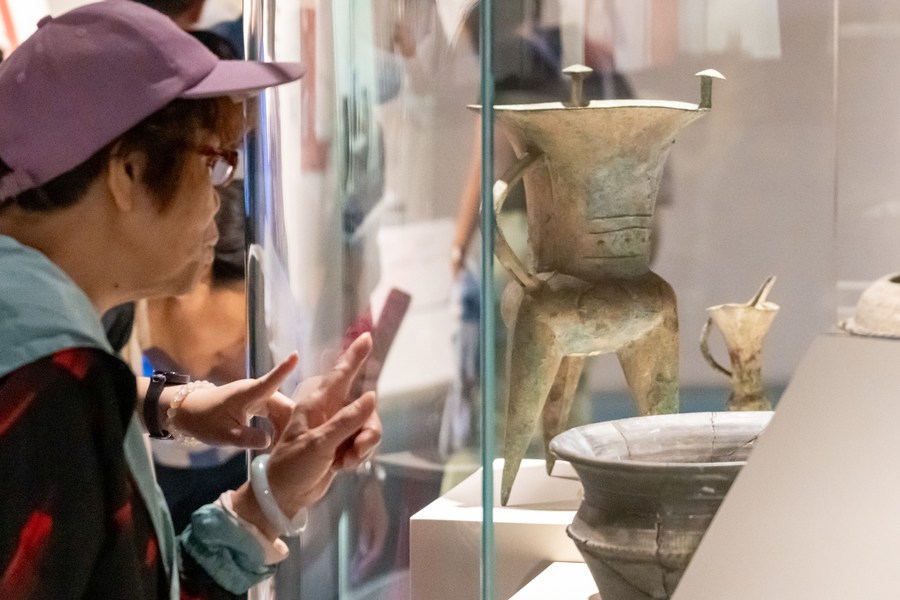
Audiences visit the "Center of the World" exhibition, which aims to trace back to the origin of Chinese civilization, focusing on Xia, Shang and Zhou, the three earliest dynasties in Chinese history and collectively referred to as the Bronze Age, held in the Hong Kong Museum of History in south China's Hong Kong, April 24, 2024. (Xinhua/Zhu Wei)
IMMERSIVE EXPERIENCE OF ANCIENT CHINESE CULTURE
During the previous year, apart from works related directly to those cultural relics, it had also been a priority for the Hong Kong curators to find simple and interesting ways to illustrate the thousands-years-old history to the audience.
The exhibition is supplemented by several multimedia devices in this concern. At the entrance of the exhibition hall, visitors can enjoy a short video summarizing the history of the three dynasties. Cartoons are put up beside certain exhibits to explain their features or related stories. There is even an interactive video game in the display area of some oracle bones that allows people to experience the divination ritual of the Shang Dynasty.
On the first two days of the exhibition, the Huaxia Ancient Music Orchestra of the Henan Museum staged an ancient Chinese music show for the Hong Kong audience. Dressed in traditional Chinese clothing, actors played out ancient tones recorded in historical documents with imitative ancient musical instruments.
Other fringe programs of the exhibition during the following months include forums, lectures, and handicraft workshops, organized jointly by Hong Kong and Henan. A study trip of some Hong Kong history teachers to Henan is scheduled in June.
By April 22, the exhibition has welcomed around 39,000 visitors. Launched by the Chinese Culture Promotion Office of the HKSAR government in collaboration with the HKMH, the exhibitions of General History of China Series will last five years and display historical relics of significant periods in chronological order.
A ding of the Western Zhou Dynasty stands out on the exhibition with an old label sticking on it. It has been deliberately kept as a witness of the story of people protecting cultural relics from gunfire during the War of Resistance against Japanese Aggression in the first half of the 20th century.
"By the exhibition, we want to show to the audience not only the ancient Chinese civilization, but also its inheritance and transmission," said Hui.
Photos
Related Stories
- New textbook on community for Chinese nation published
- Foreign journalists visit exhibition on Chinese civilization
- China's National Publication Foundation supports over 7,500 projects
- The Liangzhu site and its significance to Chinese civilization
- China's people-oriented modernization offers alternative to that of West: scholar
Copyright © 2024 People's Daily Online. All Rights Reserved.






